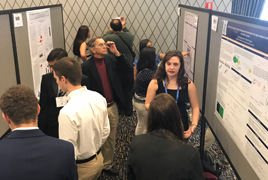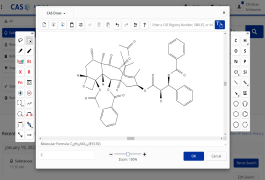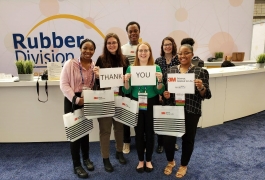Lab that Discovered Human Cause of Ozone Depletion Becomes National Historic Chemical Landmark
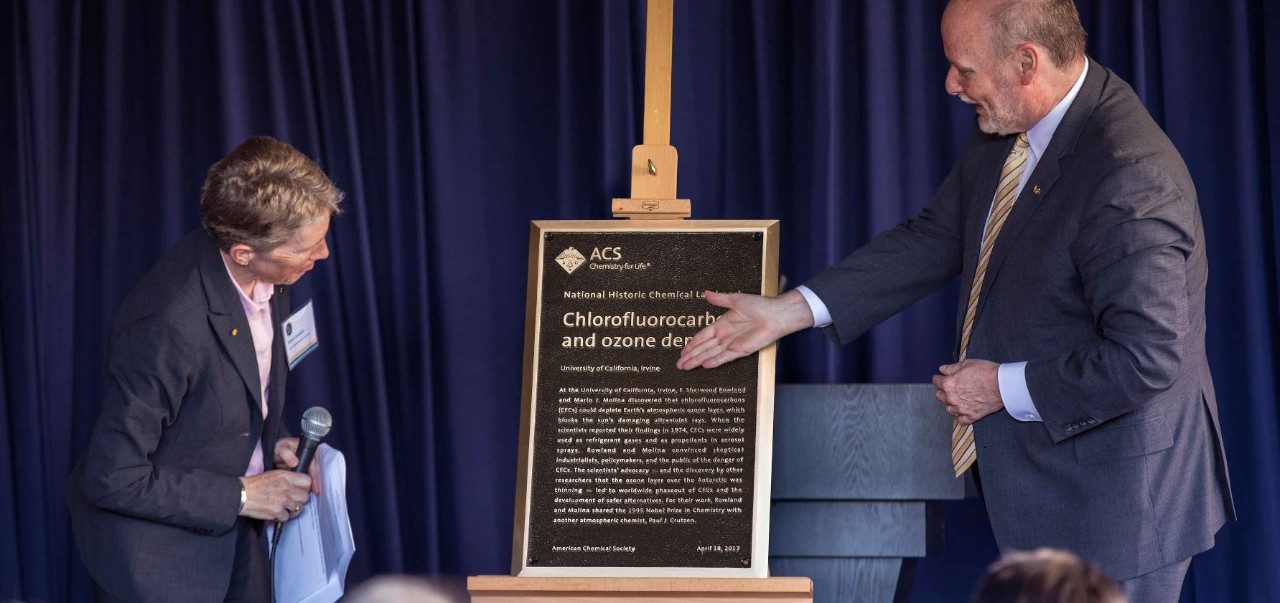
On April 18, 2017, Rowland Hall at the University of California, Irvine (UCI), was officially designated a National Historic Chemical Landmark in a ceremony that included UCI Chancellor Howard Gillman and ACS President Allison Campbell. The Landmarks program recognizes “seminal achievements in the chemical sciences.” In this case, the achievement was the discovery that commonly-used compounds were destroying the ozone layer, with impacts that are still felt today.
“You don’t often get chills down your back when you look at scientific results,” F. Sherwood “Sherry” Rowland told Chemical & Engineering News several years ago. But what he and his postdoc, Mario J. Molina, discovered in 1973 did just that. In Rowland’s lab at UCI, Rowland and Molina discovered that essentially all chlorofluorocarbons (CFCs) rise in the earth’s atmosphere to the stratosphere, between 6 and 31 miles above the surface. There, ultraviolet radiation splits the previously inert molecules, spitting out chlorine atoms that immediately react with ozone (O3). The result: a chain reaction destroying earth’s atmospheric ozone layer, which otherwise acts to shield us from the sun’s damaging ultraviolet rays.
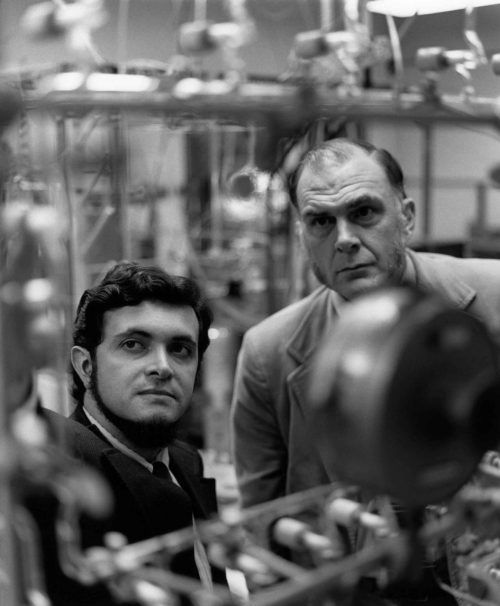
CCl2F2 + UV Light ⇾ CCIF2 + Cl
CCI3F + UV light ⇾ CCl2F + Cl
Cl + O3 ⇾ ClO + O2
ClO + O ⇾ Cl + O2
In the stratosphere, UV light releases ozone-destroying chlorine atoms from CFCs. CCl2F2, also known as Freon, is one of the CFCs that used to be a common refrigerant.
By 1974, CFCs had become widely used as refrigerant gases and propellants in aerosol sprays. Rowland and Molina had to convince not only their peers, but also skeptical industrialists, policymakers, and the public of the danger of CFCs. There was big money at stake: the Environmental Protection Agency estimated that it would cost $3 billion to replace CFC technology in the United States. CFCs were used in refrigerators and air conditioners, and obvious alternatives to CFCs simply didn’t exist.
But Rowland and Molina persisted, even when their findings were not accepted and seemed to be adversely affecting their reputations. But in 1984, their position received significant support. Joseph C. Farman and his colleagues at the Halley Bay Station of the British Antarctic Survey had been taking ground-based measurements of total ozone for decades. Looking at the raw data together, the team found that stratospheric ozone had decreased greatly since the 1960s. They published an article in Nature announcing that stratospheric ozone over Antarctica was reduced 40% in September, the end of the austral (i.e., Southern Hemisphere) winter. What they had found was the hole in ozone layer.
Suddenly the ramifications of a depleted protective layer against UV rays were real. In 1987, 56 countries agreed to the Montreal Protocol, vowing to cut CFC production and use in half. In subsequent years, the protocol was strengthened to require an eventual worldwide phase-out of the production of CFCs and other ozone-depleting chemicals.
The response marked a significant shift in global thinking on environmental issues. CFCs and other causes of environmental damage respect no borders. “It doesn’t matter where CFCs are emitted; it is a global problem,” Molina says today. “What is important is that it led to an international agreement that solved the problem.”
Rowland and Molina shared the 1995 Nobel Prize in Chemistry with another atmospheric chemist, Paul J. Crutzen. Research into environmentally-friendly refrigerants and propellants remains an active area of research.
Learn more about the Rowland Hall Landmark and the Landmarks program.



